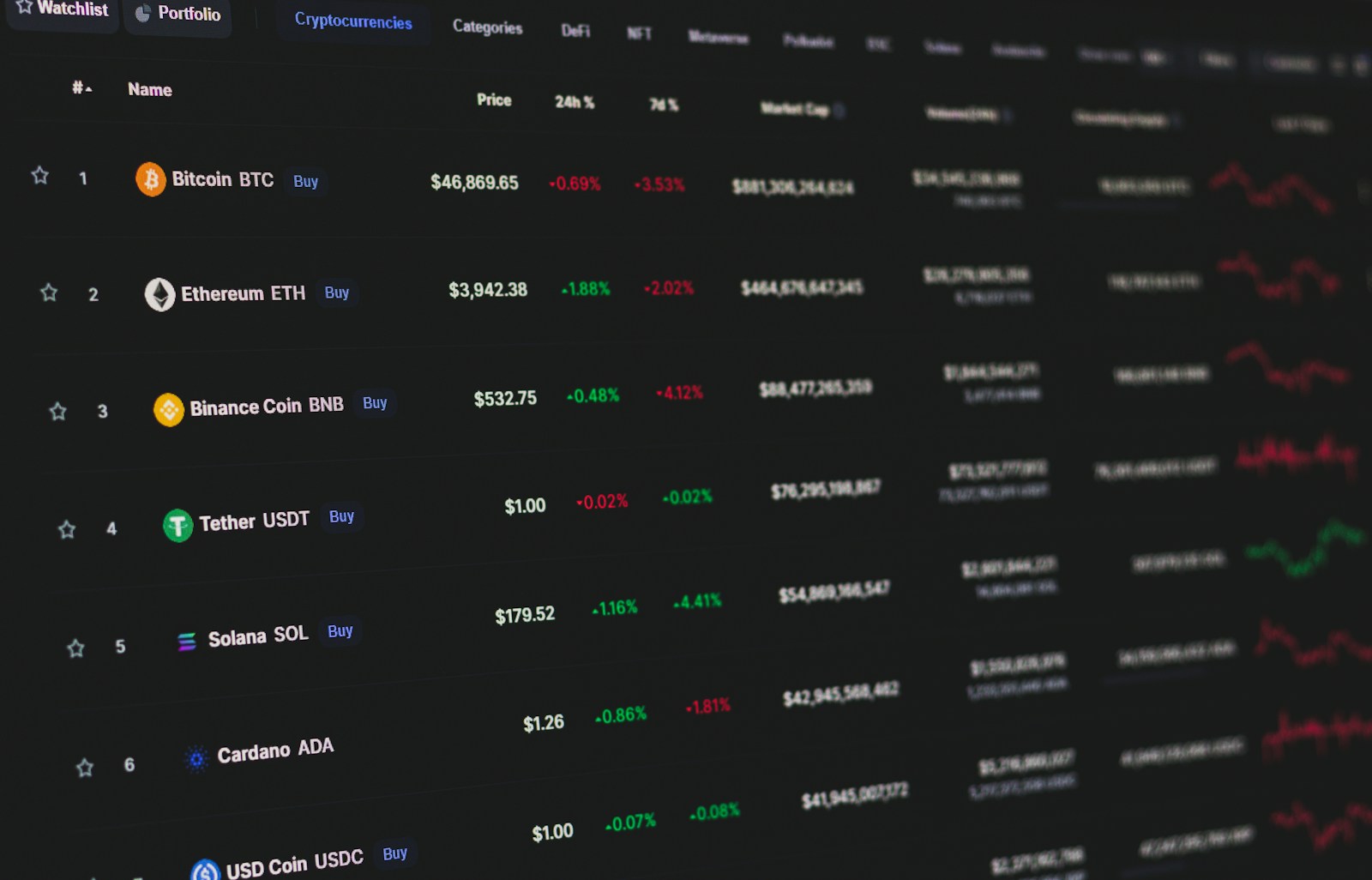
Allocating your tokens to reputable platforms can generate consistent rewards by providing liquidity to borrowers. Decentralized finance (DeFi) protocols often offer annual percentage yields (APYs) ranging from 5% to over 12%, depending on the asset and market demand. For example, stablecoins like USDC or DAI typically yield lower but more stable returns, while volatile assets may present higher rates coupled with elevated risk profiles.
Choosing between centralized and decentralized venues requires careful analysis of platform security, collateral requirements, and potential smart contract vulnerabilities. DeFi lending pools automate interest distribution without intermediaries, enhancing transparency but exposing lenders to impermanent loss or liquidation risks. Conversely, centralized entities might provide insurance mechanisms but often at the cost of reduced yields.
Recent market trends indicate a tightening supply-demand balance for quality collateralized loans, pushing yields upward in niche sectors such as NFT-backed credit lines or algorithmic stablecoin financing. However, fluctuating token valuations and regulatory scrutiny remain critical variables affecting net returns. To optimize yield, diversifying across multiple protocols while monitoring protocol audits and community governance updates is advisable.
Crypto lending: earning interest on holdings [Crypto Fundamentals basics]
To generate passive income from digital assets, utilizing decentralized finance (DeFi) or centralized platforms for asset loans provides a viable path. By supplying tokens to these services, users receive periodic returns typically expressed as an annual percentage yield (APY), which can range from single digits up to 15% or more depending on the asset and platform conditions. For instance, stablecoins like USDC often offer lower but more stable yields around 6-8%, while volatile tokens may grant higher rewards with increased exposure.
The mechanism relies on borrowers accessing liquidity by pledging collateral or through unsecured lending pools, enabling lenders to earn interest payments. Platforms such as Aave and Compound have pioneered DeFi-based lending markets where smart contracts enforce loan terms autonomously, minimizing counterparty risk compared to traditional financial intermediaries. Meanwhile, centralized exchanges like Binance or BlockFi combine user-friendly interfaces with custodial service but introduce custody and regulatory risks.
Understanding risk profiles and reward structures
Risk management is crucial when deciding where and how much to allocate for loaning out digital assets. Smart contract vulnerabilities in DeFi protocols can lead to exploits causing partial or total loss of funds–as witnessed in multiple hacks totaling millions of dollars in recent years. Centralized platforms carry credit risk tied to the operator’s solvency and regulatory compliance. Diversification across various protocols and asset types reduces exposure significantly.
Yield variability stems from market demand-supply dynamics; during high market volatility or bullish phases, borrowing demand surges pushing rates upward, whereas bearish trends compress returns. Additionally, impermanent loss does not apply here directly since lenders do not provide liquidity pools but lock tokens under lending agreements. One should carefully evaluate APYs offered against underlying protocol audits, user base size, and historical performance metrics before committing capital.
Technical distinctions between DeFi and centralized lending
The core difference lies in transaction execution and custody model: decentralized applications execute loans via automated smart contracts ensuring transparent terms without intermediaries. This approach eliminates trust dependency but requires users to manage private keys securely and understand gas fee implications for Ethereum-based networks. In contrast, centralized entities act as custodians holding user assets off-chain with faster transaction speeds yet increased counterparty risk.
A practical example includes MakerDAO’s Dai Credit System enabling collateral-backed loans generating stability fees effectively functioning as interest paid by borrowers. Contrastingly, Nexo offers flexible crypto-backed loans with instant payouts at fixed interest rates but retains control over collateral management centrally. Evaluating such trade-offs assists investors in aligning their risk tolerance with desired reward profiles.
Market trends impacting protocol yields
Recent shifts in monetary policies globally alongside growing institutional adoption affect borrowing costs within blockchain ecosystems substantially. The rise of algorithmic stablecoins and cross-chain interoperability expands lending options while intensifying competition among platforms driving down average yields marginally yet improving service diversity.
- Ethereum gas fees: High transaction costs can erode net returns especially for small-scale lenders engaging frequently;
- LTV ratios: Loan-to-value thresholds influence liquidity availability impacting supply-demand balance;
- Regulatory environment: Increasing scrutiny prompts some platforms to restrict offerings in certain jurisdictions affecting global accessibility;
An informed investor must monitor these variables continuously alongside comprehensive platform due diligence prior to participation.
Diversification strategies within passive yield generation
A balanced portfolio could include a mix of stablecoin deposits on low-risk platforms combined with selective allocation into native tokens offering governance rights plus higher yields but fluctuating prices. Layer-2 solutions like Polygon enable reduced operational expenses enhancing profitability margins for smaller stakeholders compared to mainnet transactions.
- Select established protocols verified through third-party audits;
- Allocate funds based on risk appetite–higher percentages into stablecoins versus speculative altcoins;
- Regularly rebalance positions responding to evolving market conditions;
This disciplined approach mitigates downside scenarios while optimizing cumulative rewards over time without excessive active intervention.
Outlook and technological innovations shaping future revenue models
The integration of automated portfolio management tools leveraging AI-driven analytics shows promise in maximizing output from decentralized lending ecosystems by dynamically reallocating resources according to real-time data signals. Moreover, emerging concepts like flash loans enable arbitrage opportunities that sophisticated participants exploit for incremental gains without upfront capital commitment.
Evolving interoperability standards facilitating seamless movement across blockchains reduce friction lowering barriers for broader participation thus potentially increasing aggregate liquidity pools accessible for loan origination which could stabilize returns further amidst market turbulence.
Choosing Reliable Lending Platforms
Selecting a trustworthy platform is paramount for maximizing passive returns while minimizing exposure to potential pitfalls. Prioritize platforms with transparent governance models and clear collateral management protocols, as these factors directly influence the safety of deposited assets and the stability of the yield generated. For instance, centralized services like BlockFi have historically offered fixed annual yields around 6-8%, but suffered reputational damage due to liquidity crises, highlighting the importance of platform solvency.
Decentralized finance (DeFi) alternatives introduce different risk vectors. Protocols such as Aave or Compound leverage smart contracts to automate lending processes, often providing variable yields based on supply-demand dynamics–currently ranging between 3% to 10% APY depending on asset volatility. However, smart contract vulnerabilities and oracle manipulation remain critical concerns; thorough audits and bug bounty programs should be prerequisites when evaluating these platforms.
Key Risk Metrics and Security Considerations
Assess platform risk by analyzing total value locked (TVL), historical downtime, and incident reports involving hacks or insolvencies. High TVL typically indicates user trust but may also reflect concentration risk if dominated by a few large borrowers. Security frameworks employing multi-signature wallets and decentralized governance can mitigate systemic threats. Additionally, understanding liquidation mechanisms and margin call triggers helps anticipate forced asset sales during market downturns, which could erode expected returns.
Yield variability must be contextualized against risk tolerance; stablecoins often offer lower returns but provide more predictable rewards compared to volatile tokens whose lending rates fluctuate sharply in response to market sentiment. Consider diversification across multiple platforms and asset types to balance yield aspirations with risk mitigation strategies effectively.
- Aave’s recent protocol upgrade improved gas efficiency and introduced rate-switching features that allow lenders to optimize returns dynamically.
- Centralized entities like Celsius Network showcased aggressive yield marketing but collapsed under liquidity stress in 2022, underscoring due diligence necessity.
- Emerging cross-chain protocols enable lending across ecosystems but add complexity through interoperability risks.
When selecting a platform, evaluate the underlying technology stack for robustness against front-running attacks and flash loan exploits, common vectors in DeFi environments that can distort interest calculations or trigger unintended liquidations. Transparent reporting tools displaying real-time lending pool health metrics enhance decision-making accuracy for users seeking consistent passive income streams without excessive risk exposure.
The landscape continues evolving with regulatory scrutiny shaping platform compliance standards worldwide. Entities compliant with jurisdictions offering consumer protection may present lower counterparty risks despite slightly reduced yields due to operational overheads. Ultimately, aligning platform choice with individual investment horizon, return expectations, and acceptable risk threshold enables sustainable engagement in digital asset lending markets.
Calculating Interest and Risks in Decentralized Lending
To accurately assess potential income from decentralized finance (DeFi) lending protocols, one must start with the yield metrics provided by platforms, usually expressed as Annual Percentage Yield (APY). These values often range between 4% to 12%, depending on the asset’s liquidity and market demand. For example, lending stablecoins like USDC typically offers lower but steadier rewards, whereas more volatile tokens might present yields exceeding 15%, reflecting higher risk premiums. However, APYs are dynamic; they fluctuate based on supply-demand imbalances and protocol-specific incentives such as governance token distributions, which can significantly boost passive income streams.
Risk evaluation is crucial when calculating net returns from these operations. Smart contract vulnerabilities remain a prominent threat; exploits or bugs have historically led to losses exceeding millions of dollars across multiple DeFi platforms. Counterparty risk also exists despite decentralization–protocol insolvency or sudden liquidity withdrawal can impair capital accessibility. Moreover, impermanent loss may affect lenders who provide assets in liquidity pools rather than straightforward loans, diluting expected gains. Therefore, comprehensive risk-adjusted return calculations must factor in both systemic risks inherent to blockchain networks and idiosyncratic project-level weaknesses.
Technical Factors Influencing Yield and Exposure
The mechanism of interest generation within decentralized lending hinges on borrower demand met via smart contract escrowed funds. Rates are algorithmically adjusted using collateralization ratios and liquidation thresholds to maintain platform solvency. For instance, protocols like Aave employ dynamic interest rate models that automatically increase rates when utilization exceeds 80%, incentivizing further deposits while discouraging excessive borrowing. Such features create an interplay between supply volume and reward levels that directly impacts passive income forecasts.
A deeper look reveals how tokenomics shape yield sustainability. Some platforms distribute native tokens as additional rewards on top of base lending returns; these incentives can temporarily inflate APYs but introduce price volatility risks of the reward token itself. Case studies indicate that during bull markets, compounded returns soar due to appreciation in governance tokens; conversely, bear phases compress yields sharply when token prices collapse. Ultimately, prudent participants incorporate scenario analysis incorporating market cycles and stress tests of protocol parameters to optimize their income-risk balance effectively.
Withdrawing and Reinvesting Profits: Strategic Optimization of Returns
Prioritize reinvesting generated returns to compound passive income streams, particularly within decentralized finance (DeFi) protocols offering variable yield opportunities. Empirical data suggests that reinvestment cycles aligned with protocol-specific reward distributions–often daily or weekly–can enhance annual percentage yields (APYs) by 15-25%, compared to simple withdrawal strategies.
However, calibrating this approach requires meticulous risk assessment. For instance, locking rewards into high-yield but volatile DeFi platforms may expose capital to impermanent loss or smart contract vulnerabilities. Balancing between stable lending pools with moderate, predictable returns (3-8% APY) and opportunistic exposure to emerging protocols can optimize overall portfolio performance while mitigating systemic risks.
Analytical Insights and Future Implications
- Compound Yield Mechanics: Automating the reinvestment of accrued earnings maximizes the effect of exponential growth on capital. Protocols like Aave and Compound facilitate seamless compounding without manual intervention, reducing gas fees and operational friction.
- Risk-Adjusted Return Profiles: Diversification across multiple lending markets and collateral types enhances resilience against market downturns. For example, allocating 60% of assets in blue-chip stablecoin pools with ~5% yield, complemented by 40% in experimental staking derivatives offering up to 20%, balances risk-reward dynamics effectively.
- Governance Token Incentives: Many DeFi lending platforms distribute governance tokens as additional rewards, which can significantly amplify total returns if token value appreciates. Strategic harvesting and partial liquidation or reinvestment of these tokens require ongoing market analysis to avoid overexposure.
- Withdrawal Timing Strategies: Withdrawing profits during periods of heightened network congestion or volatility can erode realized gains due to elevated transaction costs or slippage. Employing off-peak execution windows or layer-2 solutions minimizes such inefficiencies.
The evolution of programmable finance will likely introduce more sophisticated automated yield optimization tools integrating AI-driven analytics for dynamic allocation adjustments. As cross-chain interoperability matures, users will gain access to broader liquidity sources enhancing both reward potential and diversification capabilities.
Ultimately, mastering the balance between withdrawing returns for liquidity needs and continuously reinvesting them within secure yet profitable ecosystems is pivotal for maximizing sustainable passive revenue streams. This strategic agility will differentiate proficient participants from speculative actors in increasingly competitive decentralized markets.








